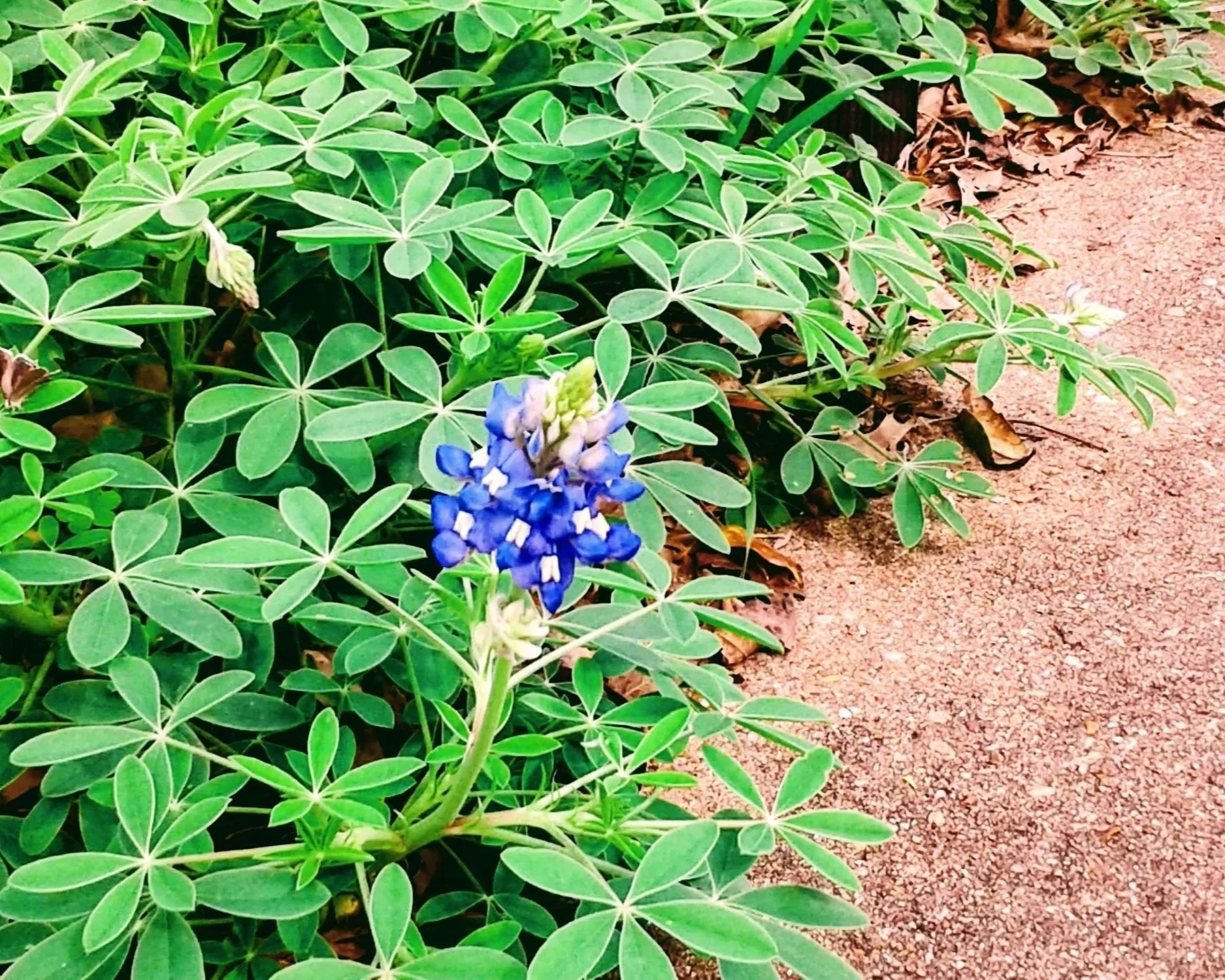Bluebonnets: Getting Started
Most Texans are aware of bluebonnets at the end of their life cycle in the spring when they bloom in profuse numbers. But most of a bluebonnet plant's life is spent hugging the ground during the winter months. They breeze through the toughest freezes with ease, to rise up in the spring to blossom.
[Note: in the picture this flower is only half open. A new bud appears behind it in the upper left corner, with another over the driveway in the upper right.]
My bluebonnets came from a nearby vacant lot. The lot had been for sale since we moved into the neighborhood in 2001. But I knew my nearby bluebonnet field would sooner or later be destroyed by development. Sure enough, a huge apartment building now stands where the bluebonnet field used to be.
So before that happened, I set out to save what I could. I considered these "sidewalk seeds," but they came from plants in the lot, especially an area of caliche where only the bluebonnets grew.
The first year, a swath of ground by my driveway was scraped down to the dirt when branches were picked up by the city. So I planted seeds there. From those seeds, I got one big and several small plants, and that was enough to begin the process of seeding the entire strip to the side of my driveway. For the first few years, I saved seeds and spread them in open spaces, but that's not necessary anymore. Now I gather my own sidewalk seeds from the driveway and street, and toss them back where they can grow.
